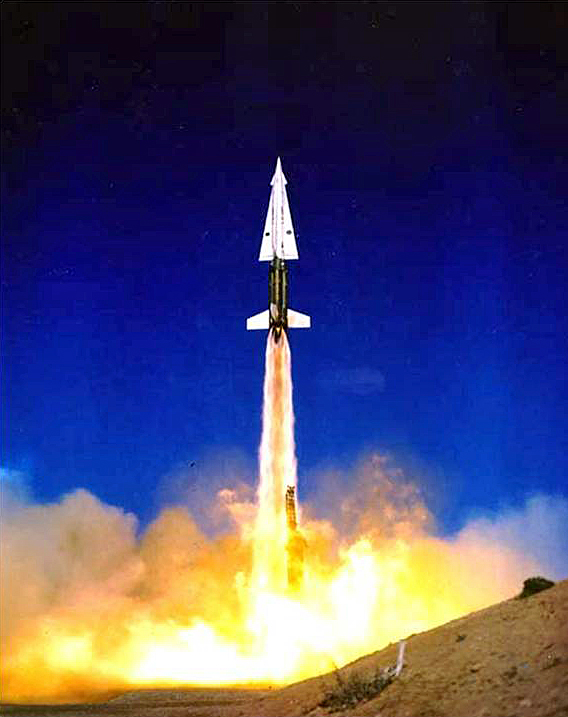
Fifty-eight years ago this month, the United States Army Nike Hercules air defense missile system was first deployed in the continental United States. The second-generation surface-to-air missile was designed to intercept and destroy hostile ballistic missiles.
The Nike Program was a United States Army project to develop a missile capable of defending high priority military assets and population centers from attack by Soviet strategic bombers. Named for the Greek goddess of victory, the Nike Program began in 1945. The industrial consortium of Bell Laboratories, Western Electric, Hercules and Douglas Aircraft developed, tested and fielded Nike for the Army.
Nike Ajax (MIM-3) was the first defensive missile system to attain operational status under the Nike Program. The two-stage, surface-launched interceptor initially entered service at Fort Meade, Maryland in December of 1953. A total of 240 Nike Ajax launch sites were eventually established throughout CONUS. The primary assets protected were metropolitan areas, long-range bomber bases, nuclear plants and ICBM sites.
Nike Ajax consisted of a solid-fueled first stage (59,000 lbs thrust) and a liquid-fueled second stage (2,600 lbs thrust). The launch vehicle measured nearly 34 feet in length and had a ignition weight of 2,460 lbs. The second stage was 21 feet long, had a maximum diameter of 12 inches and weighed 1,150 lbs fully loaded. The type’s maximum speed, altitude and range were 1,679 mph, 70,000 feet and 21.6 nautical miles, respectively.
The Nike Hercules (MIM-14) was the successor to the Nike Ajax. It featured all-solid propulsion and much higher thrust levels. The first stage was rated at 220,000 lbs of thrust while that of the second stage was 10,000 lbs. The Nike Hercules airframe was significantly larger than its predecessor. The launch vehicle measured 41 feet in length and weighed 10,700 lbs at ignition. Second stage length and ignition weight were 26.8 feet and 5,520 lbs, respectively.
Nike Hercules kinematic performance was quite impressive. The respective top speed, altitude and range were 3,000 mph, 150,000 feet and 76 nautical miles. This level of performance allowed the vehicle to be used for the ballistic missile intercept mission. Most Nike Hercules missiles carried a nuclear warhead with a yield of 20 kilotons.
The first operational Nike Hercules systems were deployed to the Chicago, Philadelphia and New York localities on Monday, 30 June 1958. By 1963, fully 134 Nike Hercules batteries were deployed throughout CONUS. These systems remained in the United States missile arsenal until 1974. The exceptions were batteries located in Alaska and Florida which remained in active service until the 1978-79 time period.
Like Nike Ajax before it, Nike Hercules had a successor. It was originally known as Nike Zeus and then Nike-X. This Nike variant was designed for intercepting enemy ICBM’s that were targeted for American soil. The vehicle went through a number of iterations before a final solution was achieved. Known as Spartan, this missile was what we would refer to today as a mid-course interceptor.
In companionship with a SPRINT terminal phase interceptor, Spartan formed the Safeguard Anti-Ballistic Missile System. The American missile defense system was impressive enough to the Soviet Union that the communist country signed the Anti-Ballistic Missile (ABM) Treaty 3 years before Safeguard’s deployment. Though operational for a mere 3 months, Safeguard was depostured in 1975. This action brought to a close a 30-year period in which the Nike Program was a major player in American missile defense.
